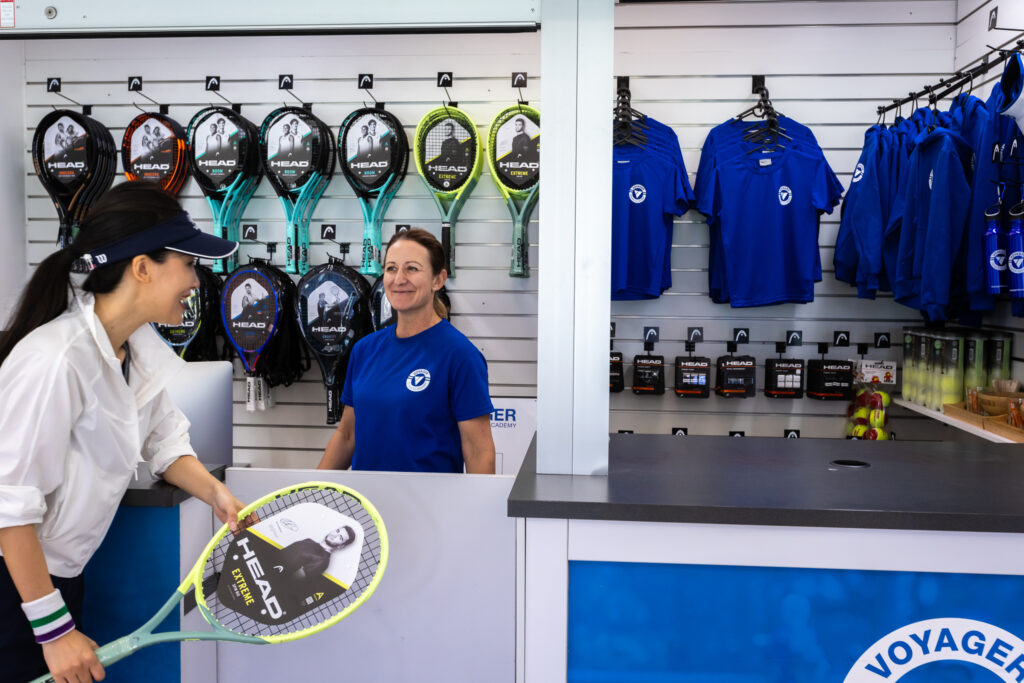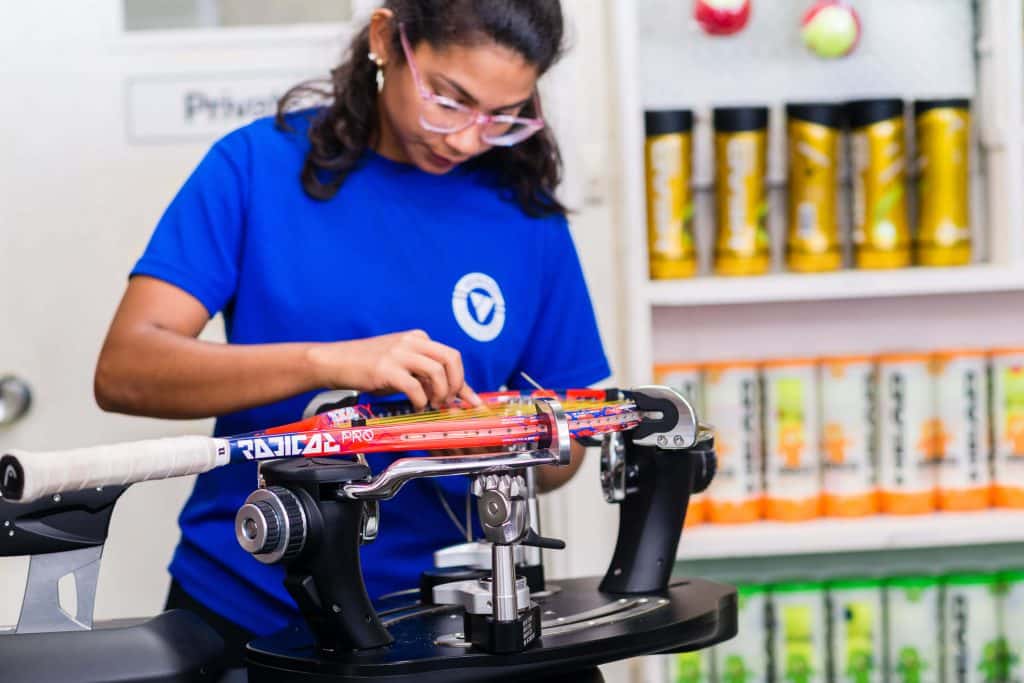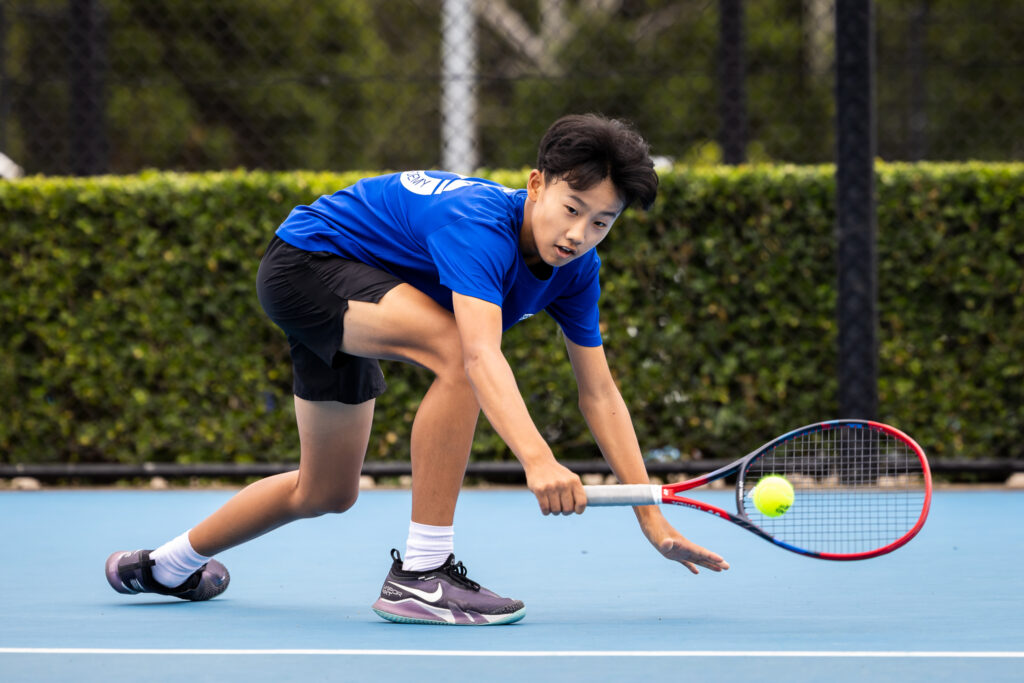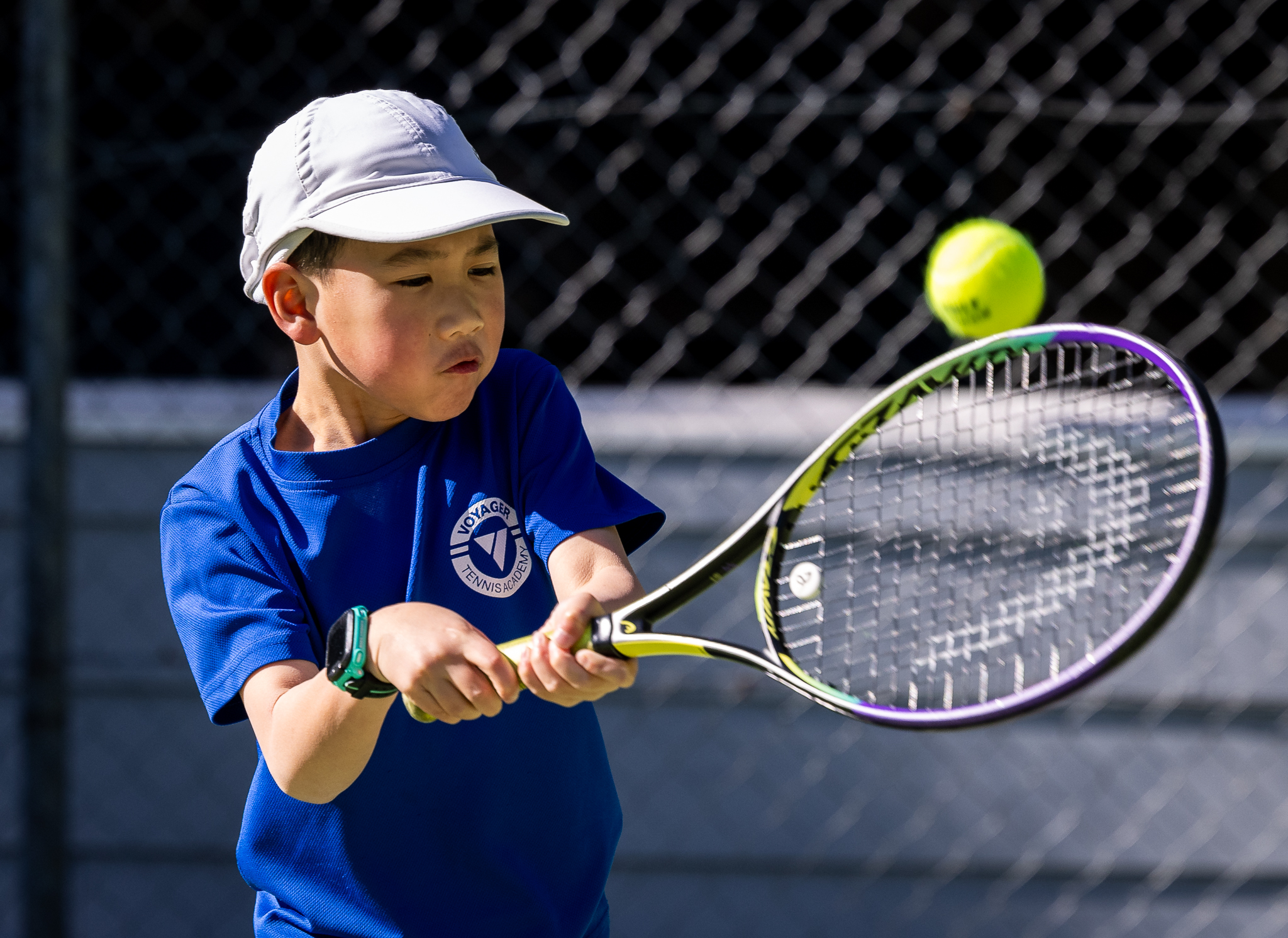
Many tennis players don’t realize how significant an impact the equipment they use can have on their performance. In this article, we will briefly explain some things to consider regarding the racquets, strings, and footwear to use when training or competing.
Junior tennis players often default to choosing a racquet based on their favorite player’s preference. However, this specific racquet may not align with their physical characteristics or playing style. Each racquet has five key areas to consider that impact its performance:
- Head size: Power correlates with the racquet’s head size. Generally, a larger head provides more power, a larger hitting area, and a forgiving sweet spot. Elite junior players often opt for racquets in the 96–100 square inches range, which balances power and control.
- Length: The standard length for an adult tennis racquet is 27 inches, but lengths range from 19 to 29 inches (29 inches being the maximum for tournament play). Longer racquets offer more reach and slightly more power, but they have a higher swing weight. Most pro players use 27-27.5-inch racquets. Consult an experienced tennis professional before choosing a racquet length, especially for elite juniors, as using full-size racquets early can lead to injury.
- Weight: Lighter racquets are more maneuverable for junior players, enabling better technical development. Heavier racquets provide more power, but increasing weight too early can lead to poor technique and injuries. Standard full-size racquets weigh around 300 g. Top pros use racquets between 330 g and 340 g. Teens should consider a 300 g racquet when physically ready. Consult a tennis professional before altering a child’s racquet weight.
- String pattern: String patterns can be open (more power and spin) or closed (more control and durability). Open patterns like 16×16 or 16×15 deflect more, offering greater ball rebound and livelier play. Closed patterns, such as 18×20, provide less power but more control and durability. Neutral patterns like 16×19 offer a balance. Players should choose a pattern based on their desired characteristics, like more power or control.
Below are some of the common grip sizes:
- 4⅛ inches/grip size 1 (smallest)
- 4¼ inches/grip size 2
- 4⅜ inches/grip size 3
- 4½ inches/grip size 4 (largest)
Reportedly, Roger Federer used a 4⅜ inch grip size 3, while Rafael Nadal uses a 4¼ inch grip size 2. Both play with overwraps, which builds the grip up to a degree.
Ensure that your junior player selects the right racquet based on these factors to enhance their game and minimize the risk of injury.

Strings
For many players, strings are often an afterthought. They invest a lot of time in researching racquets but only spend a few seconds choosing strings. However, it’s essential to understand that not all strings (and string tensions) are suitable for every player because everyone has different needs and preferences.
Here are some key components to consider when selecting strings.
Material: There are numerous strings available in the market, so we’ll summarize the most common types.
- Natural gut is considered the premium tennis string, offering exceptional tension maintenance and feel for players of all levels. It’s a favorite among professional players due to its power and feel, but it’s also the most expensive and less durable.
- Polyester strings are typically stiff and durable, ideal for generating spin. They are favored on the pro tour, often paired with a softer string like natural gut for a combination of power, spin, and feel. For instance, Roger Federer used natural gut for his main strings and Luxilon ALU Power Rough (part polyester) for his cross strings.
- Synthetic gut is the most budget-friendly option, aiming to replicate natural gut’s characteristics like power and feel, although it falls slightly short in most cases. Elite players who use synthetic gut may combine it with a polyester string for improved spin and durability.
- Multifilament strings consist of multiple filaments merged into one length. They generally provide more power and comfort than synthetic gut and are preferred by players with arm issues. While they aim to emulate natural gut performance without the high cost, they tend to lose tension quicker.
Players often face a trade-off between playability and durability, with natural gut and multifilament strings being the most playable and polyester strings the most durable. Players should thoroughly test different string types to determine the best fit for their playing style.
Gauge/Thickness: This refers to the diameter of the string, usually expressed in millimeters and/or gauge numbers. Elite players typically opt for string thickness between 1.20 mm and 1.30 mm. Thinner strings offer more power, feel, and spin potential compared to thicker strings of the same type, which provide better control and durability.
String Tension: Each racquet has a manufacturer-recommended tension range. It’s advisable to choose a tension within this range.
Generally, higher tension provides more control with less power, suited for advanced players who can generate power themselves and need precision. Conversely, lower tension offers more power with less control.
Professional players often have their racquets strung between 45–65 pounds, each with their individual preference. They may adjust their string tension based on playing conditions; increasing tension in fast conditions for control and lowering tension in slower conditions for added power.
Find out more in our guide to restringing.

Tennis shoes
It goes without saying that elite tennis players need to wear shoes specifically designed for tennis. With all the stop/start and lateral movements required, players must ensure that their shoes provide ankle support, cushioning, and the traction needed to change direction quickly. Using the wrong shoes can cause injury and impair performance. This section will explain the most common types of tennis shoes to consider, depending on the surface on which your child is playing.
Hardcourt: Shoes for hardcourts need to offer good cushioning and the ability to bounce back from an unforgiving surface. Additionally, these shoes require durable outer soles to prevent quick wear and tear.
Clay court: Typically, shoes designed for clay courts have a softer zigzag pattern underneath to provide grip when players slide on slippery surfaces. These shoes can also be used on sandy synthetic grass or natural grass courts to prevent excessive sliding.
Grass court: Finding suitable shoes for grass courts can be a challenge. They feature soft dimples under the sole to aid in changing direction and gripping the court. They can also be used on synthetic grass.
One of the most common mistakes we see players make is wearing the wrong shoe for the playing surface. This can significantly impede their performance. For example, if a player wears hardcourt shoes on a slippery surface like clay or synthetic grass, their movement will suffer, resulting in lower performance than expected. Wearing old shoes with little tread is another common mistake, which can have similar consequences.

Summary
In summary, using appropriate tennis equipment will help you maximize your potential on the court and reduce the chances of injury. Whenever possible, seek the advice of an experienced tennis professional or racquet technician to ensure you are using the most suitable tennis equipment.
By Ryan Henry, Managing Director of Voyager Tennis and Ex-Pro Tennis Player




